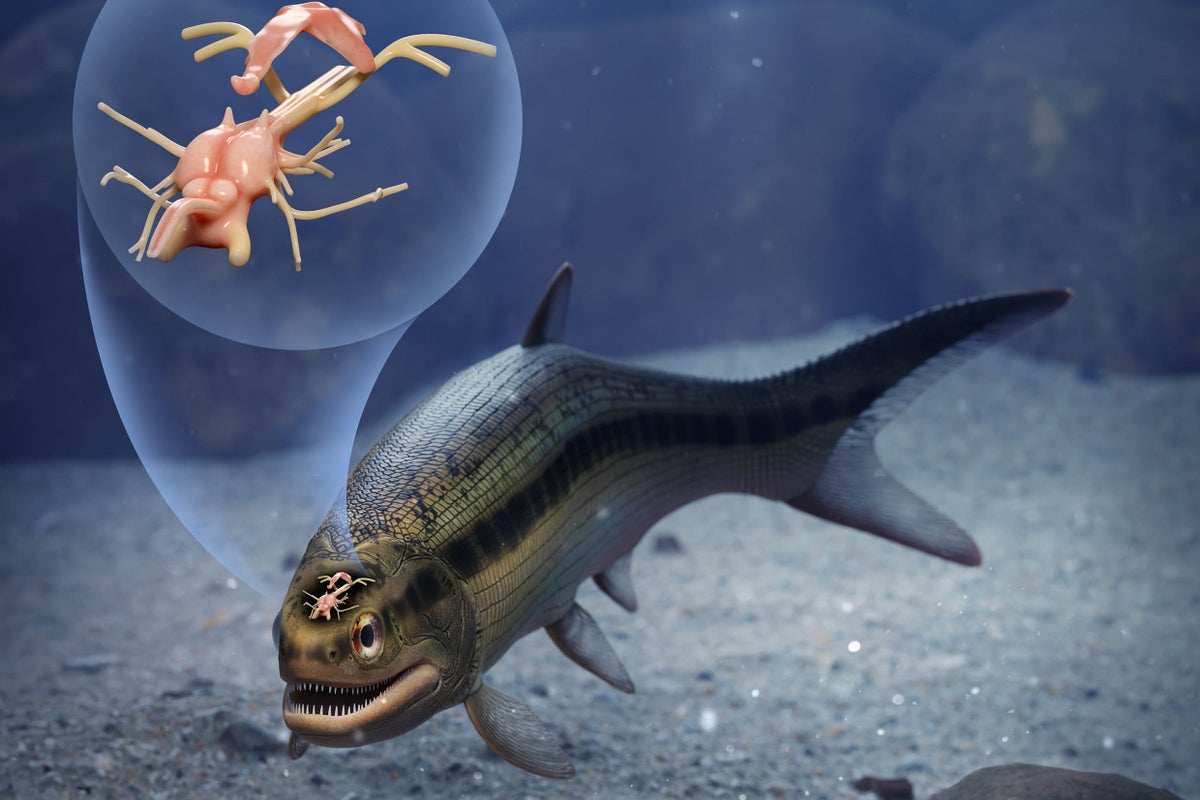‘Ancient fish fossil reveals oldest example of well-preserved vertebrate brain’

A 319-million-year-old fossilised fish, pulled from a coal mine in England more than a century ago, has revealed the oldest example of a well-preserved vertebrate brain, researchers say.
Scans reveal the skull of the creature contains a brain and nerves at the back of the brain that are roughly one inch long.
University of Birmingham and University of Michigan (USA) scientists believe the discovery opens a window into the make-up of the brain and nervous system, and early evolution of a major group of fish alive today – ray-finned fishes.
This unexpected find of a three-dimensionally preserved vertebrate brain gives us a startling insight into the neural anatomy of ray-finned fish
Dr Sam Giles, University of Birmingham
The findings shed new light into the preservation of soft parts in fossils of backboned animals, the researchers suggest.
Most of the animal fossils in museum collections were formed from hard body parts such as bones, teeth and shells.
Senior author Dr Sam Giles, of the University of Birmingham, said: “This unexpected find of a three-dimensionally preserved vertebrate brain gives us a startling insight into the neural anatomy of ray-finned fish.
“It tells us a more complicated pattern of brain evolution than suggested by living species alone, allowing us to better define how and when present day bony fishes evolved.
“Comparisons to living fishes showed that the brain of Coccocephalus is most similar to the brains of sturgeons and paddlefish, which are often called ‘primitive’ fishes because they diverged from all other living ray-finned fishes more than 300 million years ago.”
Researchers analysed the brain of a Coccocephalus wildi, an early ray-finned fish roughly the size of a bream that swam in an estuary and likely dined on small crustaceans, aquatic insects and cephalopods, a group that today includes squid, octopuses and cuttlefish.
Ray-finned fishes have backbones and fins supported by bony rods called rays.
While soft tissues such as the brain normally decay quickly and very rarely fossilise, when this fish died, the brain was replaced during the fossilisation process with a dense mineral that preserved the three-dimensional structure of the soft tissue.
Lead author Rodrigo Figueroa, also from the University of Michigan, commented: “Not only does this superficially unimpressive and small fossil show us the oldest example of a fossilised vertebrate brain, but it also shows that much of what we thought about brain evolution from living species alone will need reworking.”
Senior author Matt Friedman, from the University of Michigan, said: “An important conclusion is that these kinds of soft parts can be preserved, and they may be preserved in fossils that we’ve had for a long time—this is a fossil that’s been known for over 100 years.”
The fossil from England is the only known specimen of its species, so scientists were only able to use techniques that did not destroy it.
The skull fossil is on loan to the University of Michigan from Manchester Museum.
It was recovered from the roof of the Mountain Fourfoot coal mine in Lancashire and was first scientifically described in 1925.
Scientists believe C. wildi would have been six to eight inches long, and based on the shape of its jaw it was probably a carnivore.
When the fish died it was probably quickly buried in sediments with little oxygen present – an environment that can slow the decomposition of soft body parts.
The research is published in Nature.
For all the latest Science News Click Here
For the latest news and updates, follow us on Google News.

